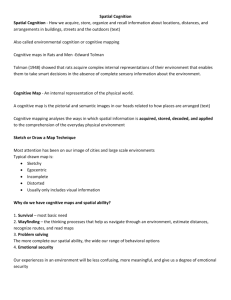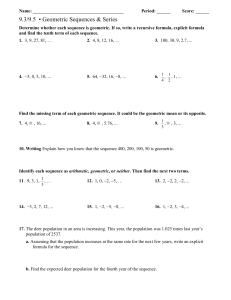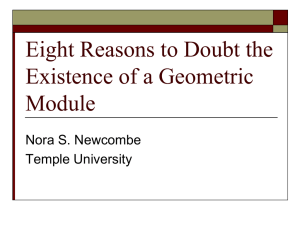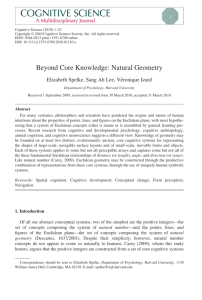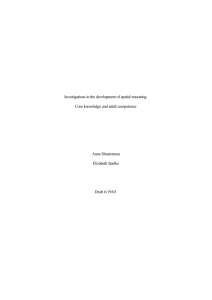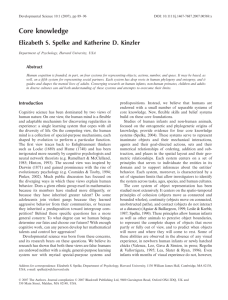Is Language Necessary to Merge Geometric and Non
advertisement
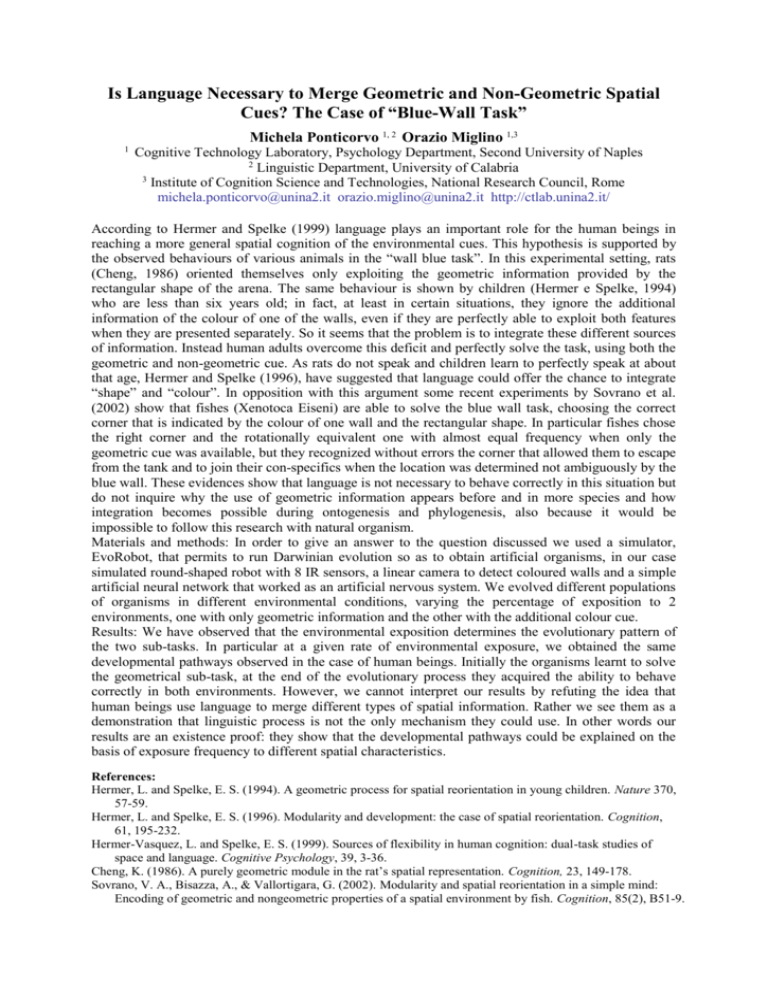
Is Language Necessary to Merge Geometric and Non-Geometric Spatial Cues? The Case of “Blue-Wall Task” Michela Ponticorvo 1, 2 Orazio Miglino 1,3 1 Cognitive Technology Laboratory, Psychology Department, Second University of Naples 2 Linguistic Department, University of Calabria 3 Institute of Cognition Science and Technologies, National Research Council, Rome michela.ponticorvo@unina2.it orazio.miglino@unina2.it http://ctlab.unina2.it/ According to Hermer and Spelke (1999) language plays an important role for the human beings in reaching a more general spatial cognition of the environmental cues. This hypothesis is supported by the observed behaviours of various animals in the “wall blue task”. In this experimental setting, rats (Cheng, 1986) oriented themselves only exploiting the geometric information provided by the rectangular shape of the arena. The same behaviour is shown by children (Hermer e Spelke, 1994) who are less than six years old; in fact, at least in certain situations, they ignore the additional information of the colour of one of the walls, even if they are perfectly able to exploit both features when they are presented separately. So it seems that the problem is to integrate these different sources of information. Instead human adults overcome this deficit and perfectly solve the task, using both the geometric and non-geometric cue. As rats do not speak and children learn to perfectly speak at about that age, Hermer and Spelke (1996), have suggested that language could offer the chance to integrate “shape” and “colour”. In opposition with this argument some recent experiments by Sovrano et al. (2002) show that fishes (Xenotoca Eiseni) are able to solve the blue wall task, choosing the correct corner that is indicated by the colour of one wall and the rectangular shape. In particular fishes chose the right corner and the rotationally equivalent one with almost equal frequency when only the geometric cue was available, but they recognized without errors the corner that allowed them to escape from the tank and to join their con-specifics when the location was determined not ambiguously by the blue wall. These evidences show that language is not necessary to behave correctly in this situation but do not inquire why the use of geometric information appears before and in more species and how integration becomes possible during ontogenesis and phylogenesis, also because it would be impossible to follow this research with natural organism. Materials and methods: In order to give an answer to the question discussed we used a simulator, EvoRobot, that permits to run Darwinian evolution so as to obtain artificial organisms, in our case simulated round-shaped robot with 8 IR sensors, a linear camera to detect coloured walls and a simple artificial neural network that worked as an artificial nervous system. We evolved different populations of organisms in different environmental conditions, varying the percentage of exposition to 2 environments, one with only geometric information and the other with the additional colour cue. Results: We have observed that the environmental exposition determines the evolutionary pattern of the two sub-tasks. In particular at a given rate of environmental exposure, we obtained the same developmental pathways observed in the case of human beings. Initially the organisms learnt to solve the geometrical sub-task, at the end of the evolutionary process they acquired the ability to behave correctly in both environments. However, we cannot interpret our results by refuting the idea that human beings use language to merge different types of spatial information. Rather we see them as a demonstration that linguistic process is not the only mechanism they could use. In other words our results are an existence proof: they show that the developmental pathways could be explained on the basis of exposure frequency to different spatial characteristics. References: Hermer, L. and Spelke, E. S. (1994). A geometric process for spatial reorientation in young children. Nature 370, 57-59. Hermer, L. and Spelke, E. S. (1996). Modularity and development: the case of spatial reorientation. Cognition, 61, 195-232. Hermer-Vasquez, L. and Spelke, E. S. (1999). Sources of flexibility in human cognition: dual-task studies of space and language. Cognitive Psychology, 39, 3-36. Cheng, K. (1986). A purely geometric module in the rat’s spatial representation. Cognition, 23, 149-178. Sovrano, V. A., Bisazza, A., & Vallortigara, G. (2002). Modularity and spatial reorientation in a simple mind: Encoding of geometric and nongeometric properties of a spatial environment by fish. Cognition, 85(2), B51-9.



